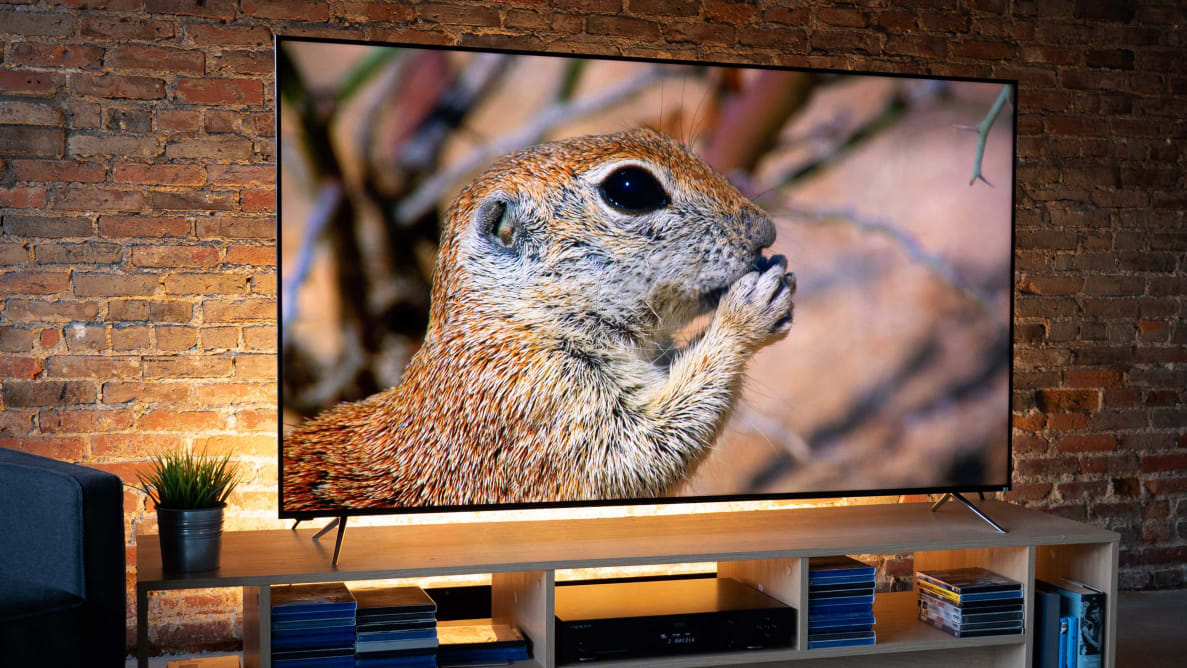Pros
-
One of the brightest TVs we've ever tested
-
Vibrant color
Cons
-
Limited viewing angles
-
Software lacks flexibility
But reader, I won't lie: It's easy to zone out in the testing lab. The parade of TV boxes is often relentless, their styrofoam pieces piling up in the corner of a tiny room lit only by the glow of a color bar test pattern. In 2019, most TVs are good, but few are truly great, and it can be tough to muster up excitement for a cavalcade of competency.
That's why the Vizio P-Series Quantum X (available at Walmart for $1,499.00) struck me like a lightning bolt. Vizio spent the better part of the last decade being the go-to brand for budget-conscious consumers willing to cut some corners, until a few years ago, when its TVs got good enough to start taking swings at the industry's heavy-hitters. The P-Series Quantum X is the culmination of that journey; Vizio says it's the best TV the company's ever released. I'm inclined to agree.
It's not just that the Quantum X is the brightest TV we've ever seen, though its luminosity is truly a sight to behold. It's not just that its quantum dot display dishes out dazzling color worthy of distinction, though it makes for a mesmerizing show. At the end of the day, what makes the P-Series Quantum X so special is that it's every bit as exciting as Vizio would have you believe, all while maintaining a competitive price point.
It really is the best TV Vizio has ever released.
About the Vizio P-Series Quantum X
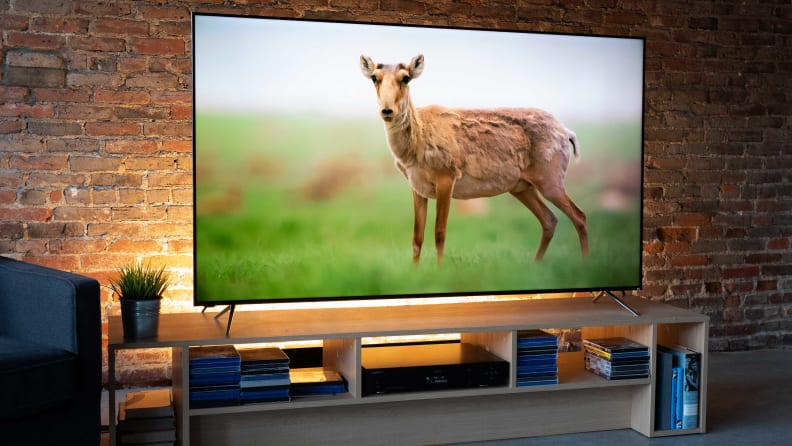
The Vizio P-Series Quantum X is available in two sizes: 65 and 75 inches.
The Vizio P-Series Quantum X (henceforth known as the PQX) is available in just 65-inch and 75-inch versions, and our loan unit from Vizio is the 65-inch model. Here's how both sizes shake out in terms of pricing:
• 65-inch (Vizio PX65-G1), MSRP $2,199.99 • 75-inch (Vizio PX75-G1), MSRP $3,499.99
While we expect both the 65- and 75-inch versions of the PQX to perform similarly, there's a key difference between the two that'll likely affect performance: local dimming zones.
The 65-inch version of the PQX is outfitted with 384 total local dimming LED zones. The 75-inch model, on the other hand, is sporting a total of 480. Having not seen the 75-inch PQX in action, we can't say for sure how much of a difference the added zone coverage makes. In general, more local dimming zones is better, but the 10-inch difference in screen size between the two versions might make the additional 96 zones a wash.
In any event, here are some of the features that both sizes of the PQX share:
• 4K (3,840 x 2,160) resolution • Quantum dot display • Supports High Dynamic Range (HDR10, Dolby Vision, and HLG) • Full-array local dimming • 120 Hz refresh rate • SmartCast 3.0 smart platform • Built-in Chromecast support • Apple AirPlay 2 support (beginning this year) • DCI-P3/10-bit color space
Before testing a TV, we make sure the panel is on and receiving a continuous signal for at least 24 hours, which gives the pixels plenty of time to warm up. Each TV is then switched to its most accurate picture mode—for most TVs, these are the modes are often named some variation of "Cinema," "Movie," "Expert," or "Calibrated." The Vizio PQX's most accurate picture modes, for example, are called "Calibrated" and "Calibrated Dark" (the latter of which is more appropriate for dark settings).
This brings me to an important point. In the media- and customer-facing language for the P-Series Quantum X, whether on Vizio's website or in the company's reviewer's guide, you'll find references to the PQX's ability to crack 3,000 nits. It's an impressive feat, no doubt, but one that we had to bend over backwards to confirm. In the end, we take all of our tests in a TV's best picture mode, which isn't necessarily a TV's brightest picture mode.
Now, while you might not be treated to steady, 3,000-nit brightness whenever you throw on a movie, you needn't worry about Vizio exaggerating about this TV's performance; as I'll explain later, this TV gets really, really bright.
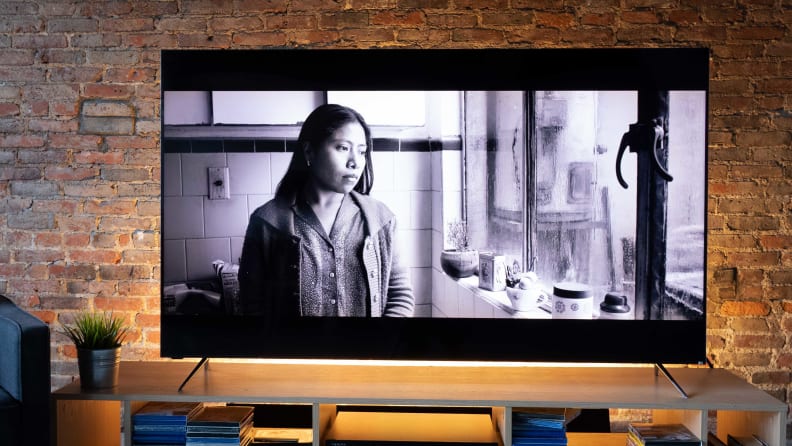
The Vizio P-Series Quantum X offers excellent contrast, mostly as a result of its ability to get stupendously bright.
Performance Data
We use a standard ANSI checkerboard pattern for most of our basic contrast tests, but we also use white and black windows ranging from 2% to 90% to test how well the contrast holds up while displaying varying degrees of brightness. For all of our tests, both SDR and HDR, the PQX was set to its "Calibrated" picture mode.
• HDR contrast (brightness/black level): 642.8 nits/0.081 nits • SDR contrast (brightness/black level): 354.2 nits/0.076 nits
• HDR peak brightness: 2,057 nits (40% white) • SDR peak brightness: 1,149 nits (40% white)
• HDR color gamut coverage: 95% (DCI-P3/10-bit) • SDR color gamut coverage: 98% (Rec.709)
• Viewing angle: ±12.78°
Connectivity
The Vizio PQX gives its users plenty of options when it comes to inputs, including four HDMI 2.0b ports. A relatively small percentage of our readers might be disappointed by the PQX's lack of HDMI 2.1 ports, but if you're not exactly sure what I'm talking about, you probably don't need to worry about this.
For me, the only puzzler here is the TV's lonely, single USB port. I feel bad for it and wish it had a friend. Here's what you'll see if you take a close look at the connectivity cut-outs on the back of the TV:
• 5x HDMI (4x HDMI 2.0b, 1x HDMI 1.4, 1x ARC) • 1x USB 3.0 • Component, LAN ethernet port, RF input • Optical audio output, analog audio output, headphone jack
What We Like
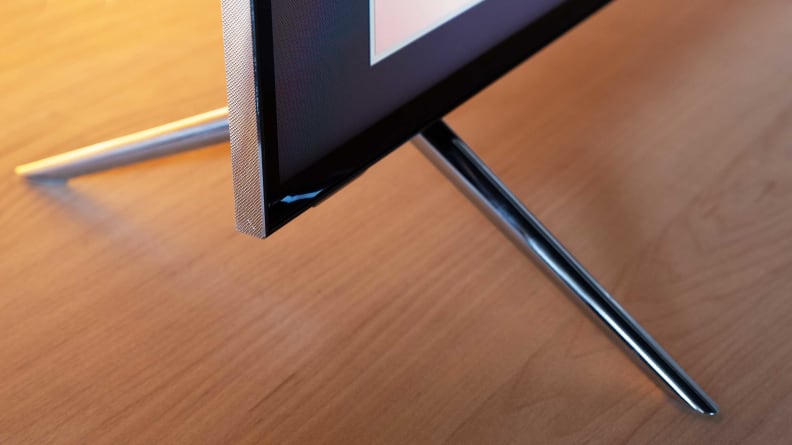
Like most TVs in 2019, the Vizio P-Series Quantum X sits atop two wide-set "feet." The shiny, chrome-like finish matches the texture that runs down the sides of the panel.
Posh design
While the Quantum X isn't completely bezel-less (and really, what TV is?), good luck finding narrower bezels—the PQX is rocking an impressive, non-fussy design that emphasizes its incredible picture. Running along the outside of the panel is a chic, silver-toned texture that isn't exactly subtle, but nevertheless attractive.
Whether you opt for the 65-inch or 75-inch version of the PQX, your room-dominating panel will sit atop two thin wide-set feet whose chrome-like finish match the panel's "diamond cut" accents. Being a full-array backlit TV, you're not going to get the type of mind-boggling thinness that comes with an OLED panel—even at its thinnest point, the PQX is still a couple of inches thick. That said, its girth doesn't look like a burden; it's thoughtful design all the way around.
This is the brightest TV we've ever tested.
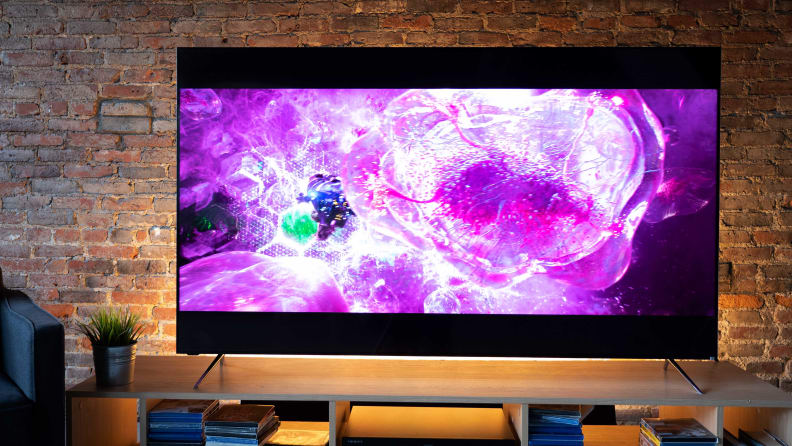
In HDR, I routinely measured brightness readings that climbed as high as 2,500 nits. That amount of brightness, combined with the PQX's respectable black levels, result in a picture that seriously pops.
I'll cut right to the chase: The PQX gets ridiculously bright.
In an era where HDR-capable TVs are impressing casual viewers and tech reviewers alike with 1,000-nit brightness levels, the PQX climbs well above 2,500 nits in HDR—even in picture modes that are calibrated for darker rooms. In fact, I even measured peak brightness readings of close to 1,200 nits in SDR. To be clear, these particular readings were taken with specific test patterns and not during content, but they still speak to the PQX's facility for foot-lamberts.
Given the high ceiling, you'd be justified in worrying about the possibility that the PQX might get too bright for its own good. And while I've yet to encounter a piece of HD content that the PQX couldn't make look good, there is occasional light bloom, even with 350+ local dimming zones at work. The effect is most notable when bright bits clash with darkness (like with a subtitle or title card) and it's obviously worse at off-angles, but overall I'm impressed with the PQX's ability to keep over 2,000-nit highlights reined in to a respectable degree.
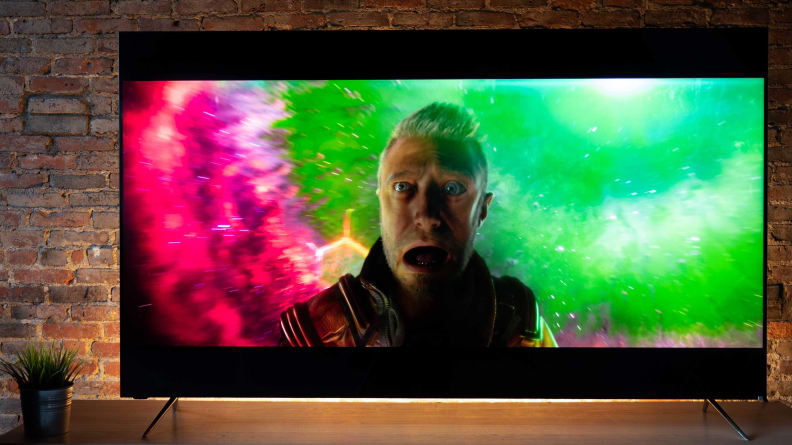
Being a quantum dot display, the PQX's colors are extra vibrant—our test results indicate that it covers roughly 95% of the wide P3 color gamut.
We've often reminded our readers that, while OLED TVs are typically the pound-for-pound best-performing TVs money can buy, they're not necessarily the best choice for people with bright living spaces. The inky-dark black levels of an OLED TV might net you picture-perfect contrast, but all it takes is some aggressive ambient light to wash it all away. With that in mind, the PQX feels like a counterpoint to OLED; your black levels will not be quite as deep, but friend, feel free to leave the living room lights on. It's like the OLED's so-called "infinite contrast"—just in the opposite direction.
Quantum-dot color and spectacular contrast makes for OLED-rivaling clarity
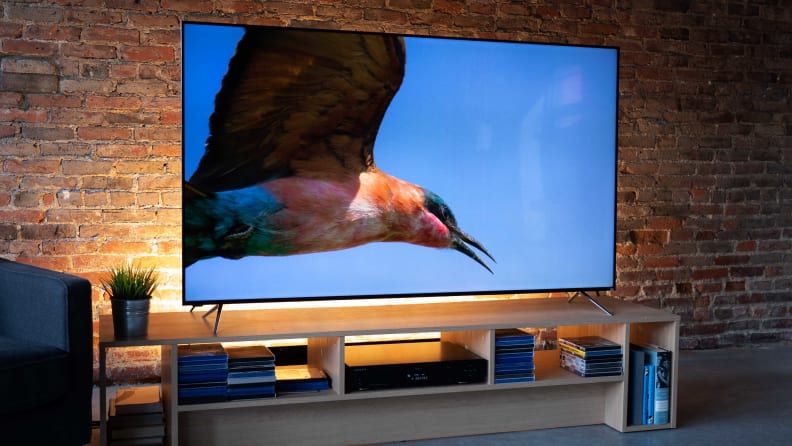
While the PQX is unable to get as dark as most OLED displays, its dazzling color and overall contrast gives OLED a run for its money.
You'll forgive me for all of the OLED comparisons, I hope. Like I said, OLED TVs aren't for everyone, but some of them are among the best TVs we've ever tested—even if they remain prohibitively expensive for most people. In other words, if your intent is to manufacture an award-winning TV in 2019, you're either making an OLED TV or intending to topple one.
To say, then, that the Vizio Quantum X often looks just as good as—or better than—any OLED TV, is high praise. But that's exactly the thought that keeps returning to my mind whenever I throw in an 4K Blu-ray and stare at it for forty minutes at a time, my eyes refusing to look away.
The contrast is a big factor, of course, but you can also thank the PQX's quantum dot display, which is capable of covering about 95% of the wide P3 color gamut, wringing vibrancy out of each hue along the way.
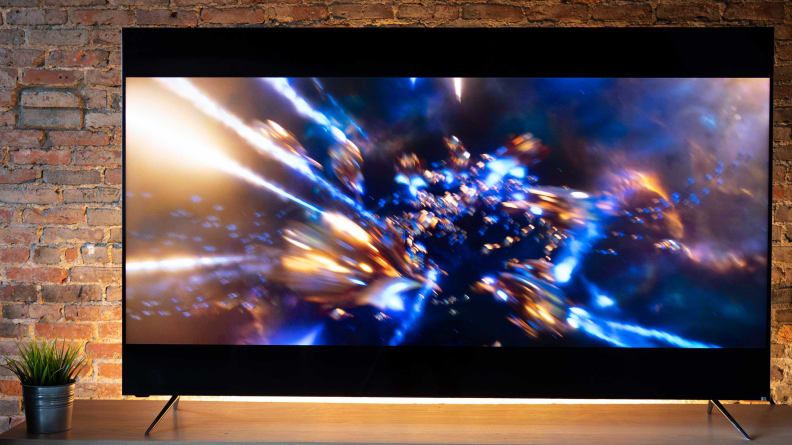
The Quantum X handles motion quite well, but depending on the type of content you're dealing with, you might want to tinker with the TV's motion interpolation settings.
The PQX's motion performance is what you'd expect from a premium LCD TV in 2019: good for most people, but AV enthusiasts might find themselves tinkering with the TV's motion settings to fine-tune, depending on content. For the most part, I have no major issues with how the PQX renders motion. On occasion, there are subtle, blinking phenomenons during camera pans, but it seems dependent on the content's light level, leading me to believe that what I'm seeing has more to do with the TV's local dimming algorithm and not the actual motion engine.
What We Don't Like
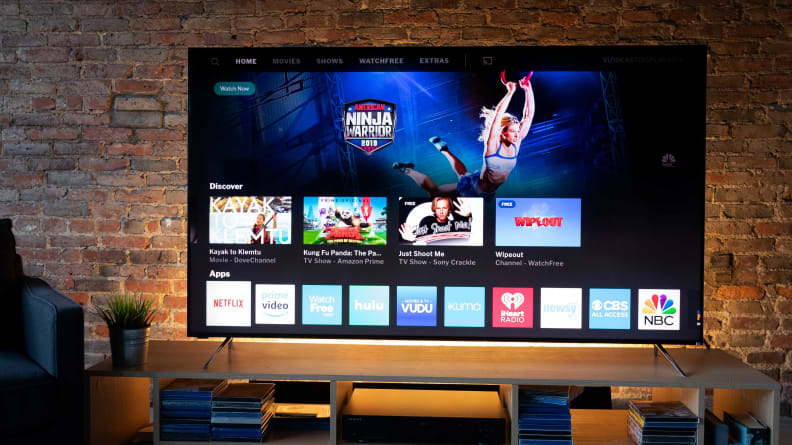
Vizio's software has improved, but that ain't saying much.
For the past few years, Vizio smart TVs have leaned heavily on Google integration, and the Quantum X is no different. In addition to the latest version Vizio's smart platform, SmartCast 3.0, the PQX also arrives with built-in Chromecast support. You can browse the TV's thorough (but unremarkable) repertoire of apps, which includes usual suspects like Netflix and Hulu, or you can cast content directly from an external device.
SmartCast's reliance on Chromecast has always been branded as more flexibility, but in truth, the lack of an app store makes the Vizio smart platform feel somewhat anemic. This newest iteration of SmartCast feels more robust, but still not quite worthy of a TV like the PQX.
On the whole, the PQX runs on decent software, but the experience isn't as refined as some of its high-end competitors. If you've used a Vizio TV in the last three years, you'll find the experience familiar. You might even find the basic, day-to-day tasks of jumping around menus and HDMI inputs to be zippier on the PQX than, say, a 2017 Vizio TV. But overall, the software feels dated; between the lackluster smart platform and the clunky menu software, the PQX deserved better.
Narrow viewing angles harsh my mellow
The PQX's aforementioned light blooms are, predictably, worse at off-angles, and in general, the picture begins to deteriorate if you move just three to four feet off to the side. All told, the PQX's ideal viewing cone isn't as narrow as some of the TVs I've reviewed this year, but it's also one of the PQX's biggest sore spots, if only by default.
Bummer about the remote
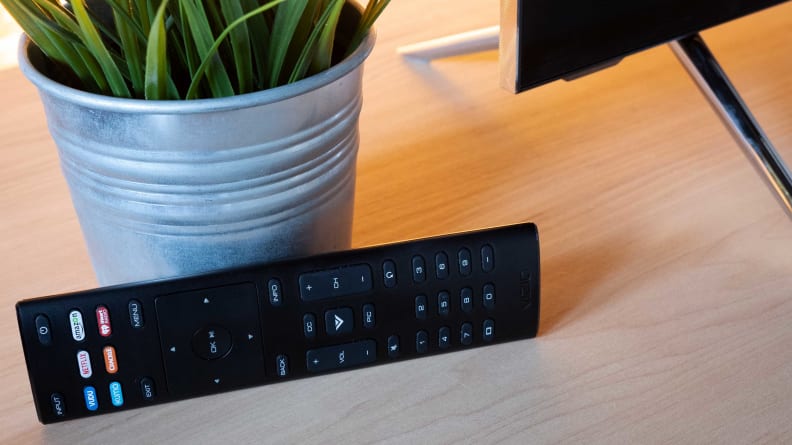
Most people won't think twice about the PQX's remote control, but I'm ready for something new.
Admittedly, my hang-ups with contemporary remote control design are a product of using these things every single day, so I don't expect very many people to share my disappointment here. That said, the PQX remote control is more or less the same one Vizio has been including with most of its TVs for years now, and it's probably time for a new one.
The buttons are small, close together, and, when you factor in Vizio's often-sluggish software, interfacing with the PQX involves routine second-guessing—not at all the type of experience that one would expect (and hope for) when looking at its fantastic picture.
Should You Buy It?
Absolutely—it's one of the best TVs we'll see all year
From its searing highlights to its brilliant hues, the P-Series Quantum X is a top-shelf TV with the picture to prove it. Given its ability to get really freakin' bright, it's a particularly good option for folks who long for the performance of an OLED but remain skeptical about an OLED's relatively limited peak brightness. For instance, the LG C9 OLED, with its ultra-wide viewing angles and better-regulated contrast, is the all-around better performer, but its steady hand doesn't come with the sort of "wow" factor that comes with 2,000 to 3,000 nits of brightness. Additionally, the 65-inch version of the LG C9 is currently priced at $1,200 more than the PQX.

The PQX is sure to be one of the best TVs we'll see all year. It's an especially good option for folks who plan on putting their TV in a relatively bright room.
Should you look closely, you'll find a handful of shortcomings around the edges of the PQX experience: a narrow viewing angle, occasional light bloom, and a ho-hum smart platform. They're the sort of issues that aren't unique to the PQX, however, and if you're as nit-picky as I've been known to be, you'll find similar foibles in just about every high-end flagship TV. Nevertheless, it's worth keeping them in mind if you're trying to decide between two or three top-tier TVs.
There's no question about it: The P-Series Quantum X is the best TV Vizio has ever released. It may not come with the modest price tag you might've come to expect from a historically budget-friendly brand like Vizio, but given its capabilities, it's a competitively priced TV with ton of upside.
Meet the tester
Michael Desjardin graduated from Emerson College after having studied media production and screenwriting. He specializes in tech for Reviewed, but also loves film criticism, weird ambient music, cooking, and food in general.
Checking our work.
Our team is here to help you buy the best stuff and love what you own. Our writers, editors, and experts obsess over the products we cover to make sure you're confident and satisfied. Have a different opinion about something we recommend? Email us and we'll compare notes.
Shoot us an email
